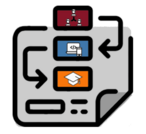
Video Description: Paul Chodas, Manager for NASA's Near Earth Object Program, explains Astronomical Units (AUs) and how this unit of measure helps simplify an understanding of distances within the solar system. To further simplify thinking about these vast distances, distances within the solar system are explained scaled to the size of a football field. Video Length: 2:25.NASA eClipsTM is a suite of online student-centered, standards-based resources that support instruction by increasing STEM literacy in formal and nonformal settings. These free digital and downloadable resources inform and engage students through NASA-inspired, real-world connections.NASA eClips Real World segments (grades 6-8) connect classroom mathematics to 21st Century careers and innovations. They are designed for students to develop an appreciation for mathematics through real-world problem solving.
- Subject:
- Earth and Space Systems
- Measurement and Geometry
- STEM/STEAM
- Science
- Material Type:
- Visual Media
- Author:
- Betsy McAllister
- Date Added:
- 03/03/2022


